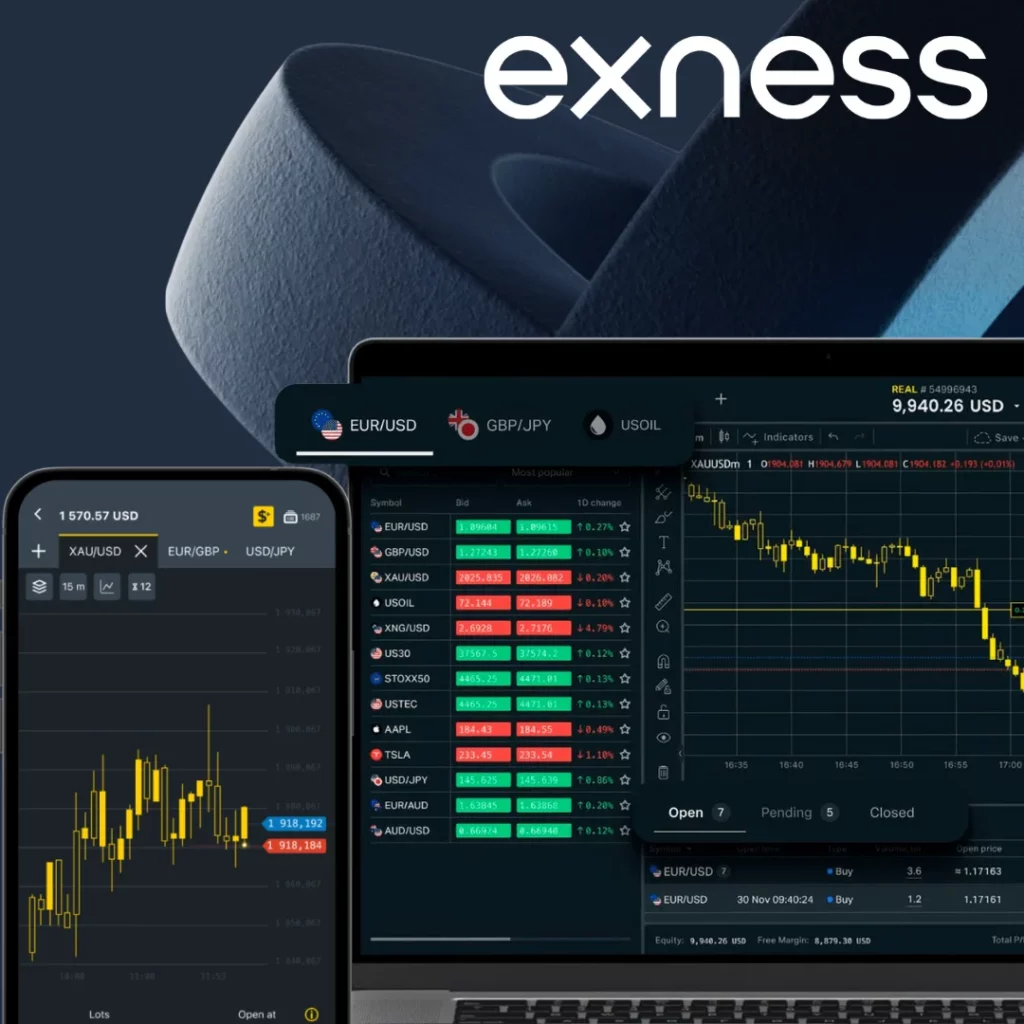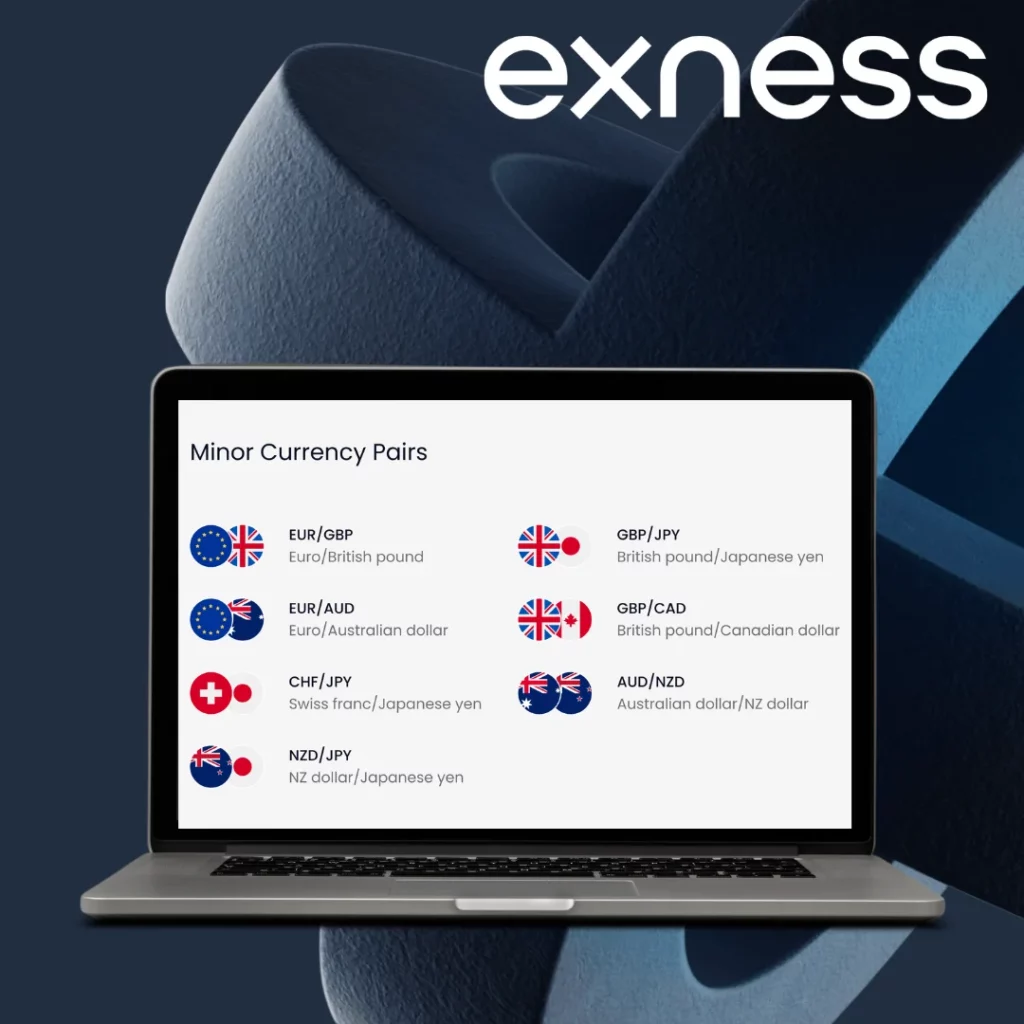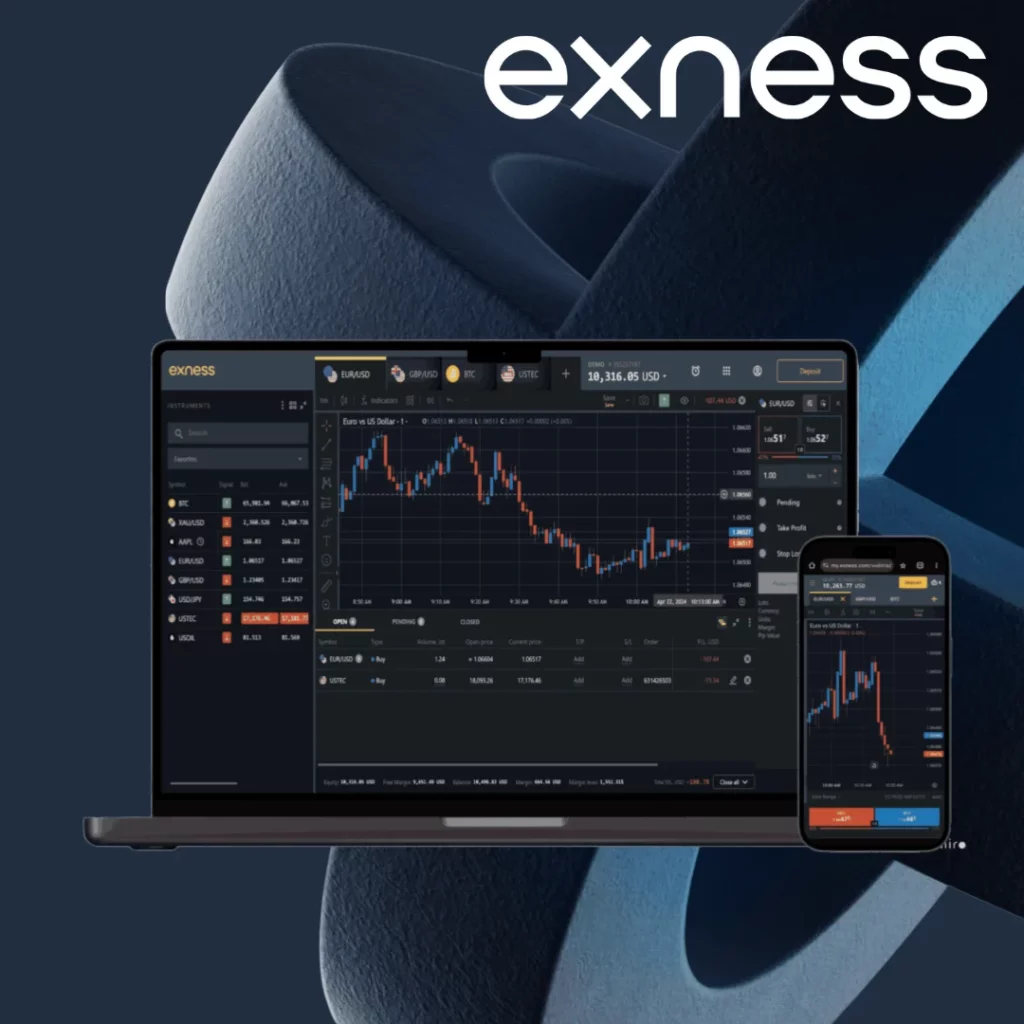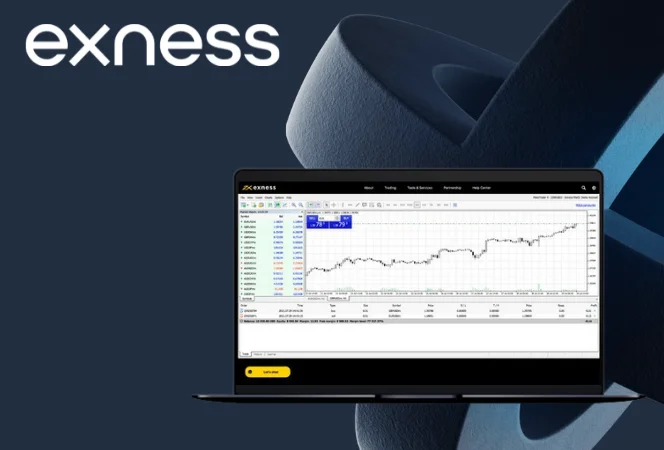- Forex Pairs Available on Exness
- Major Pairs (EUR/USD, GBP/USD, USD/JPY)
- Why Trade Major Pairs?
- Minor and Exotic Pairs Selection
- Trading Conditions by Pair Type
- Spreads and Leverage for Major Pairs
- Minor and Exotic Pairs Conditions
- How to Choose the Right Forex Pair
- Best Pairs for Beginners vs Experienced
- Frequently Asked Questions
Forex Pairs Available on Exness
Forex pairs on Exness are divided into three main categories: major, minor, and exotic. Each group has its own characteristics, volatility, and liquidity levels. This classification helps traders match instruments with their trading style, risk tolerance, and market knowledge.
Major Pairs (EUR/USD, GBP/USD, USD/JPY)
Major pairs are the most traded currency combinations in the global forex market. They include currencies from the largest economies, usually involving the US dollar.
Top major pairs available on Exness:
- EUR/USD – Euro vs. US Dollar.
- GBP/USD – British Pound vs. US Dollar.
- USD/JPY – US Dollar vs. Japanese Yen.
- USD/CHF – US Dollar vs. Swiss Franc.
- AUD/USD – Australian Dollar vs. US Dollar.
- USD/CAD – US Dollar vs. Canadian Dollar.
- NZD/USD – New Zealand Dollar vs. US Dollar.
These pairs are highly liquid and generally feature the lowest spreads, making them popular among traders of all levels.

Why Trade Major Pairs?
Major pairs are known for their stability, tight spreads, and consistent trading volume. This makes them easier to analyze using technical and fundamental approaches. For traders focused on execution speed and lower costs, majors are often the first choice.
Key advantages:
- High liquidity – Orders are filled quickly with minimal slippage.
- Lower trading costs – Narrow spreads reduce entry and exit costs.
- Market depth – Price movements are influenced by global macroeconomic trends, making forecasting more structured.
- Widespread coverage – These pairs are included in most trading strategies and indicators.
Minor and Exotic Pairs Selection
Beyond the majors, Exness offers a wide selection of minor and exotic currency pairs. These pairs open the door to diversified strategies and regional economic opportunities.

Minor pairs do not include the US dollar but consist of other major currencies like EUR, GBP, and JPY. Examples:
- EUR/GBP.
- EUR/JPY.
- GBP/AUD.
- CHF/JPY.
Exotic pairs feature one major currency and one currency from an emerging or less traded economy. Examples:
- USD/THB – US Dollar vs. Thai Baht.
- EUR/TRY – Euro vs. Turkish Lira.
- USD/ZAR – US Dollar vs. South African Rand.
- USD/MXN – US Dollar vs. Mexican Peso.
While exotic pairs offer wider price swings, they also come with higher spreads and lower liquidity. This makes them suitable for more experienced traders.
Trading Conditions by Pair Type
The conditions under which forex pairs can be traded on Exness vary based on the type of pair. Major, minor, and exotic pairs each have distinct spreads, leverage limits, and margin requirements. Understanding these variables is key to optimizing trade entries and managing exposure efficiently.
Spreads and Leverage for Major Pairs
Major currency pairs typically come with the tightest spreads on the Exness platform. This is due to their high liquidity and trading volume across global markets. These characteristics result in lower transaction costs and faster execution.
| Currency Pair | Typical Spread (pips) | Maximum Leverage | Execution Type |
| EUR/USD | 0.3 – 1.0 | Up to Unlimited | Market Execution |
| GBP/USD | 0.4 – 1.2 | Up to Unlimited | Market Execution |
| USD/JPY | 0.4 – 1.0 | Up to Unlimited | Market Execution |
The leverage setting can be adjusted manually depending on the account type and regulatory restrictions. Traders should also monitor their margin level closely, especially during high-impact news events.
Minor and Exotic Pairs Conditions
Minor and exotic pairs offer broader price movements but typically come with wider spreads and reduced leverage due to their lower liquidity.
| Pair Type | Examples | Typical Spread (pips) | Max Leverage |
| Minor | EUR/GBP, AUD/JPY | 1.0 – 2.5 | Up to 1:2000 |
| Exotic | USD/TRY, USD/ZAR | 5.0 – 20.0 | Typically 1:200–1:400 |
Key notes:
- Exotics are more volatile, often impacted by local interest rate decisions and geopolitical risks.
- Wider spreads make position sizing and entry points more sensitive.
- Swap-free options are available on many accounts for traders observing Islamic finance principles.
Exness offers dynamic margin requirements on exotic pairs during major market events, ensuring more precise risk allocation for volatile sessions.
How to Choose the Right Forex Pair
Selecting a forex pair goes beyond just spreads and volatility. It depends on your strategy, time horizon, trading hours, and comfort with market-specific risks. While major pairs suit short-term trades and scalping, minor and exotic pairs may align better with swing or position trading styles.
Best Pairs for Beginners vs Experienced
Traders at different levels should approach currency selection differently. Here’s a basic breakdown:

For Beginners:
- Stick with major pairs such as EUR/USD or USD/JPY.
- Focus on consistency – these pairs are heavily researched and follow predictable market patterns.
- Lower spreads reduce costs and help new traders test strategies efficiently.
For Experienced Traders:
- Diversify into minors and exotics to find untapped opportunities.
- Use fundamental and technical analysis for currencies tied to commodities or emerging markets.
- Monitor wider economic indicators such as inflation rates, interest rate policy, and political news.
Decision-making tips:
- Match pair volatility with your risk profile.
- Check trading hours – pairs involving JPY, AUD, or NZD are more active during Asia sessions.
- Avoid overexposure to one currency or region across multiple trades.
Frequently Asked Questions
What are the most traded forex pairs on Exness?
The most actively traded pairs include EUR/USD, GBP/USD, and USD/JPY. These major pairs dominate due to their high liquidity, tight spreads, and stable market coverage.

